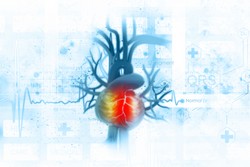Genetic predisposition to cardiac arrhythmia
Atrial fibrillation (AF) is the most common cardiac arrhythmia, affecting over six million Europeans. Patients present with an increased risk for stroke, dementia, heart failure and mortality. The pathophysiology of AF is complex and incompletely understood while emerging clinical evidence underscores a genetic aetiology to AF. Recent genome-wide associated studies (GWAS) have uncovered various genetic polymorphisms that are linked to AF. However, these studies do not prove a direct pathogenic role of these genetic loci in the development of the condition. Thus, it is necessary to demonstrate a direct functional effect of causal alleles on transcription or protein function. Scientists of the EU-funded ADAM-15 AND AF (Evaluation of ADAM-15 in atrial fibrillation) project set out to provide solid evidence on the role of ADAM-15 in AF. ADAMs (A Disintegrin And Metalloproteinase) constitute a large family of membrane-bound glycoproteins implicated in essential cellular processes as well as diseases like cancer and atherosclerosis. Recent evidence demonstrates an upregulation of ADAMs in AF patients' concomitant with deregulated cardiac remodelling. To study the role of ADAM-15 in AF, scientists generated knockout mice and studied their cardiac phenotype. Interestingly, no alterations were observed in body, heart or ECG parameters but ADAM15 knockout mice showed a significantly increased vulnerability for atrial arrhythmias compared to wildtype controls. The induced arrhythmia episodes were also significantly prolonged. Collectively, the results of the study provided compelling evidence that common genetic variants could have a functional effect on cardiac rhythm and thus increase the vulnerability for AF. Research on other GWAS risk loci will improve our understanding of AF pathophysiology further. Central to such studies will be the ADAM15 knockout mouse model as it the only available stable model system for AF.







